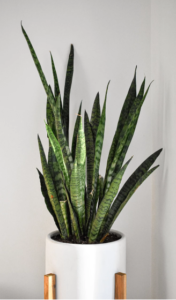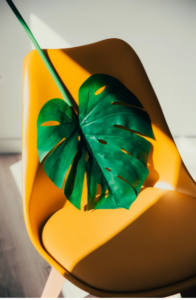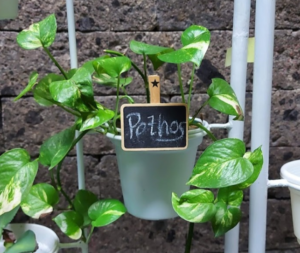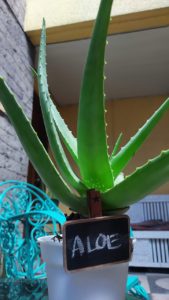You’ve seen them. Your plantito/tita friends have most likely been introducing their newest babies on their news feeds for a few months now. These 5 most popular photobombers. seen on all those Zoom meetings and IG feeds, comprise the dream squad of houseplants. Well, if not the dream squad (there are leafy holy grails out there still to be had!) at least the ones monopolizing the most airtime online nowadays.
So, are these potted celebrities really as great as we think they are? Surprisingly, not quite.
Friend…or foe? A quick rundown of these 5 trending houseplants and whether or not it’s a good idea to have them move in with you…

1. SNAKE PLANT
The Snake Plant also known locally as Spada or Mother-in-Law’s Tongue is the classic lola houseplant which is now making the rounds as the go-to greenery of choice especiallyby the first-time plant momma. Hard to kill, low maintenance (it’s drought-proof!) and survives in full sunlight or low light, this mottled, long-leafed, IG-ready succulent has definite pros and some surprising cons. Is it friend or foe?
FRIEND: It filters carbon dioxide and releases oxygen at night which makes this the perfect bedroom, organic air-filtering buddy. It also cleanses indoor air from other harmful chemicals (from household cleaning products and synthetic materials) such as benzene, formaldehyde, trichloroethylene, xylene and toluene that, over time, accumulates in our homes. However, its benefits end there.
FOE: Considered poisonous when ingested, consuming large amounts of this Sansevieria causes nausea, vomiting and diarrhea in both humans and pets. Keep away from nibbling pets and small kids who have a penchant for putting things in their mouths. But, otherwise, if you are pet-free, toddler-free and have no intention of adding this to your salad, the Spada is a double-edged sword that works in your favor. (Photo by Jake Goosen, Unsplashed)
2. ZZ PLANT

The ZZ plant, otherwise known botanically as the tongue-twisting Zamioculcas Zamiifolia and locally as the “welcome plant” or Zanzibar Gem, is the unspoken chorus girl to the rest of this star-studded cast. It’s no fuss, no muss qualities have made this the typical “welcoming” background to many an entrance, walkway, or driveway due to its low-maintenance (black thumb gardeners will attest to this), lush-looking, glossy-leafy appearance and its easy propagation. But is it really a welcome addition to your home?
FRIEND: Once again, its natural air-purifying attributes makes the ZZ plant an ideal pick for home or office. Studies have shown that this leafy beauty is “capable of removing significant amounts of xylene, toluene, benzene and ethylbenzene from the air.” And for those wondering what those chemicals are, these are emissions given off by synthetic materials such as carpets, plastics, cleaning agents etc. found in our homes, potentially harmful emissions that accumulate over time especially in areas that are poorly-ventilated.
FOE: According to Plant Care Today, the ZZ Plant’s seeds, leaves, sap and roots are not only toxic when consumed by both humans and pets but contain sharp microscopic “oxalate crystals” that cause skin irritation, burning or swelling likened to “biting into ground glass” when eaten or touched. So, handle with care. Wearing protective gloves is key. And a good wash with soap and water after contact is a must. Probably not the best plant to have if you’ve got small children and pets around. Best to keep the little ones away from this gem.
(Photo by Pino Nguyen, Unsplashed)
3. MONSTERA DELICIOSA
Okay, okay, Jinkee Pacquiao just made this Monstera craze (even if Jinkee’s was really the elephant ear species) even crazier but who can resist this wild-looking monstrosity with the delicious name? Known as the “Swiss cheese plant” or “hurricane plant” because of its hole-y or torn appearance, the Monstera genus of philodendrons has s
 everal varieties–the most popular, nowadays, seems to be the Deliciosa.
everal varieties–the most popular, nowadays, seems to be the Deliciosa.
Characterized by its tropical, lengthy, leafy lobes with elongated cut-outs, this interior designer’s pick dujour is surprisingly easy to keep alive! Happy in our warm climate, this IG-mainstay is an easy-to-please house guest which enjoys indirect sunlight and moderate to low watering (forgetful plant mommas, rejoice!). Pretty, low-maintenance, joy-inducing—what more can you ask for from this delicious monster of a houseplant?
FRIEND: Although it didn’t make NASA’s top ten best air purifying plants, the Monstera, as with most plants, is still considered a good all-around, air-friendly companion to any home.
FOE: Apparently, it also contains calcium oxalate crystals which have been proven to be highly toxic when ingested.
Keep curious children and pets (particularly dogs and cats) away from these tropical beauties. (Photo by Kobu Agency, Unsplashed)
- POTHOS

Pothos, also known as Devil’s Ivy, Money Plant or Epipremnum aureum, this evergreen plant is known for its thick, waxy, heart-shaped/arrow-tipped leaves usually streaked with variations of yellow, silver and blue-green mixed in with its green foliage. Locally, its most famous kind is the Golden Pothos.
Kill-proof, it can survive in soil or water, thrive in low or bright sunlight, and is very forgiving of neglectful plant parents who leave it untended while on vacation. It’s a houseplant that can defy death many times which probably explains the nickname Devil’s Ivy. It’s also usually seen dangling from trellises in Italian restaurants, Asian homes or doctor’s offices, not just for its pretty looks but supposedly due to its ability to attract “wealth”—its leaves’ color, shape and prolific nature apparently mimics currency.
FRIEND: The pothos made it to NASA’s list and is considered a true friend, bestie level, because it will thrive in harsh conditions (weather or otherwise) and will multiply at will—easily providing its plant parents with lots of grandchildren to help purify more rooms (for free!) in their homes.
FOE: Unfortunately, this silver lining is still attached to a dark cloud. Toxic calcium oxalates are also found in these friendly plants and are harmful to small children and pets, when consumed.
- ALOE VERA
“Awww come on!” I can almost hear you say these words. “I’m sure Aloe vera is the best friend plant personified!” True, this well-loved, spikey ode to the natural cure-all is one of those tried-and-tested friends every household should have—not just because its slimey gel can help heal skin irritations but it can also be eaten! Aloe vera from the Aloe family, also known as the medicine plant or Aloe barbadensis, boasts of many health benefits ranging from remedies for sunbur

n, heartburn, diabetes, constipation, even breast cancer and depression, this humble succulent is truly a household essential. But is it completely harmless?
FRIEND: Benefits abound (see above).
FOE: Also harmful to dogs and cats. Aside from the obvious nicks and scratches one can get from the prickly spikes running along its pointy leaves, the most popular “true aloe” variety also contains toxins such as anthraquinones, anthracene, glycosides (aloin) which induce vomiting and change of color in urine (to red) in animals. Sorry, aloe lovers, this plant is still hazardous to your pets.
In summary, like in any friendship, there are good days and bad days. In the case of these houseplant favorites, each one gets high marks for its air improvement qualities but each also comes with a cautionary warning.
Good news is, all is well, as long as you keep them away from your curious (and hungry) furry and not-so-furry babies. These leafy faves are actually great friends you can consider a welcome part of the family. (Now, if we only had space for one of those Jinkee giants at our house, our family would finally be complete.)




